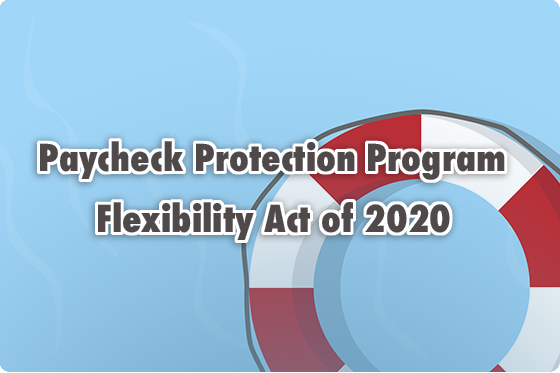
The Paycheck Protection Program (PPP) was passed as a part of the Coronavirus Aid, Relief, and Economic Security Act (CARES Act) in response to the needs of businesses experiencing loss of revenues due to government forced shutdowns. The PPP was specifically intended to provide funding for businesses to continue paying their employees, including benefits such as health insurance, and paying immediate expenses to prevent businesses from closing permanently. Congress has provided more funding for the PPP in response to high demand and, with the passage of the Paycheck Protection Program Flexibility Act of 2020 (PPP Flexibility Act), enacted several changes and clarifications to make it more friendly for American business owners.
The PPP Flexibility Act grants businesses more time to meet the requirements for loan forgiveness. Businesses are allowed to retain the original 8-week covered period for spending the PPP loan funds if they choose, but the covered period is now extended to 24 weeks after the date of loan origination or until December 31, 2020, whichever is earlier. Under the PPP Flexibility Act, new loans disbursed after the loan’s passing now have a maturity period of at least 5 years. Further, to qualify for the safe harbor from reductions in the forgivable amount, businesses have until December 31, 2020 to document that they have rehired former employees, found equally capable employees, or are incapable of rehiring employees due to the inability to return to normal business levels because of governmental restrictions. Businesses are now allowed to defer payments until the forgiven amount is determined or 10 months after the last day of the covered period if the borrower fails to apply for forgiveness.
There are other major changes from the PPP Flexibility Act. The first is the spending threshold to remain eligible for loan forgiveness. The SBA, with input from the Secretary of the Treasury, originally specified that a minimum of 75% of the PPP loan funds must go towards payroll expenses. The PPP Flexibility Act lowers that threshold to 60%. This means that now only 60% of loan funds must go towards payroll to be eligible for total loan forgiveness. The other 40% of the funds must go towards either mortgage interest (not principal), rent, or utilities. If a business does not reach the 60% threshold, the business is still eligible for partial forgiveness. The last major change is the ability for employers to delay payment of employer payroll taxes. Now all recipients of the PPP loans are eligible to delay payroll tax payments, regardless of previous debt forgiveness, with the terms of 50% of total deferred paid by December 31, 2021 and the remainder paid by December 31, 2022.
The PPP Flexibility Act helps businesses adjust to the circumstances of the forced shutdowns in ways not initially allowed by the CARES Act and SBA regulations. While the deadline to be approved for a PPP loan remains June 30, 2020, the PPP Flexibility Act should make the loan program beneficial to any business that needs PPP assistance by allowing the delay of employer payroll taxes payments, extending deadlines for forgiveness requirements, and allowing more flexibility with expenses covered by the funds.












